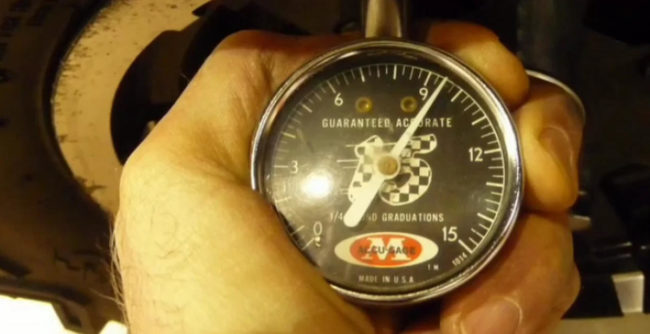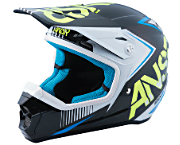Attorneys: Understand How Off-Highway Vehicle
Tire Pressure Relates to Winning Cases
© 2020 by Bill Uhl, Court-Qualified Expert Witness
www.ATVexpertwitness.com
Operators of ATVs, quads, four-wheelers, ROVs, UTVs, side by sides, RZRs, SxSs and other off-highway vehicles (OHVs) sometimes don’t read their owners / operators manuals. These machine operators are at a significant disadvantage because these off-road vehicles do not operate like other types of vehicles. All of these vehicles provide an illusion of stability. Sometimes they also provide a false sense of safety which can be dangerous to the operator.
Attorneys for both plaintiffs and defendants in off-road injury or wrongful-death cases will be better prepared to argue their cases when they understand certain implications of tire pressure and other safety issues briefly covered in this article.
I thoroughly cover many more ways operators can unintentionally create an unstable platform when I train operators of ATVs, quads, four-wheelers, ROVs, UTVs, side by sides, RZRs, SxSs and other off-highway vehicles like dual-sport motorcycles, snowmobiles and motorcycle dirt bikes. This article is designed to focus mostly on tire pressure, although I briefly discuss why a pre-ride inspection of any off-road vehicle is essential to ensure safety.
This is an example of why the testimonials of many attorneys who have hired me have recognized the advantages of hiring an expert witness who is a safety trainer.

Most drivers know their tires need to have air in them if they are going to operate a vehicle, whether it’s a car, truck, tractor, bus or an OHV. Unfortunately, most people don’t understand why it is so important to always be carrying the correct tire pressure (PSI) in each tire.
Most operators have been told that to have their tires wear evenly, they must maintain the correct tire pressure as marked on the side of each tire. Even some attorneys who accept cases regarding off-road vehicle incidents and injuries or death from accidents are not aware that the need for correct tire pressure goes far beyond the above very simple explanation.
Note: OHV tire manufacturers also clearly state the mounting pressure on a tire’s side walls. It’s critical not to mistake the mounting PSI (36PSI) as the operational PSI so operators need to be very careful not to use the high mounting pressure during operation.
When a plaintiff or defendant is operating an ATV, quad, four-wheeler, ROV, UTV, side by side, RZR, SxS or another off-highway vehicle, in a sense, their vehicle’s tires are the starting point. I say that because this is where the vehicle meets the ground.
So many factors regarding the plaintiff or defendant’s safety depend on the type of surface they’re operating on, such as mud, sand, rocks, clay, a wet or dry surface, etc. To some degree, all of this can dictate the type of tires to use and the tire pressure to employ. There is also a minimum and maximum PSI regarding the specific type of tires during operation.
The operator needs to understand that appropriate tire pressure creates the most stable platform for the type of vehicle they are operating from. They need to know how that platform interfaces with the specific operating surface they are operating the vehicle on. The implications for attorneys who take on cases representing defendants or plaintiffs are obvious.
Most manufacturers are so convinced that correct tire pressure is critical that they provide the owner of the vehicle with a special tire gage in the tool kit that comes with the vehicle. This tool is capable of correctly measuring the PSI for the vehicle’s tires.
Note: Depending on the vehicle, the front and back tires may need to carry a different PSI. When a vehicle uses different size tires on the front of the vehicle compared to the back, different tire pressures are usually required.
Because OHV tires are very different than the highway tires car and truck drivers are accustomed to, off-road vehicle manufacturers provide very important safety information in the owner’s manual of each machine, describing the need for correct tire pressure. This information is specific and essential. Safety decals are at least partly based on manufacturers’ concerns that not all owners / operators will read the manual, even when a manufacturer states that it is a requirement to read the manual before operating the vehicle. This is only one reason that safety training is so important regarding avoiding off-road vehicle accidents, injuries and deaths.
Safety decals adhered to the vehicles also provide quick access and easy reference to this important safety information.
In spite of the fact that manufacturers provide the correct tire gage for owners and operators to use and multiple places to quickly find the safety information about what PSI to use, manufacturer are not present when people operate their vehicles. In other words, they cannot, in any given moment, make people follow correct safety procedures that are critical to take every step to decrease the risks of operating an off-highway vehicle.
Most manufacturers also include in owner’s manuals the safety need to check the PSI before each use of a vehicle. These manuals also discuss the necessity of conducting a pre-ride inspection. In fact, most manuals include checklists that should be completed before operating a vehicle.
This need for a pre-ride inspection is often overlooked when an owner and/or operator thinks they know everything they need to know. So many people really don’t understand how important the pre-ride inspection is for safe operation of the vehicle. For this reason, I cannot overemphasize that the illusion of safety and stability created by many types of ATVs, quads, four-wheelers, ROVs, UTVs, side by sides, RZRs, SxSs and other off-highway vehicles can make people think they know how to operate their vehicle.
Too many owners and operators assume they know what it takes for a specific OHV to be set up correctly so it can be operated safely. This is perhaps most dangerous when an operator thinks they know what they need to because they have previously driven a car or truck. It is often also dangerous when an operator accustomed to operating one type of off-road vehicle changes the type of OHV they use (like switching from an ATV to a UTV) and assumes the new vehicle will operate the same way as the vehicle they had previously used.
This is why the owner / operator who reads an owner’s / operator’s manual will often see a manufacturer’s written warning, like “This vehicle does not operate like any other vehicle”. In fact, even when comparing different brands and models of the same vehicle type, both attorneys and OHV operators discover that diverse off-road vehicles are not even like each other. This is also why understanding the physics of how these vehicles operate is essential.
Why would the manufacturers tell owners / operators to always check the tire pressure with the tire gage that was provided before each use and to observe tire inflation at every opportunity?
The answer is multi fold:
- Yes, tire pressure controls and balances the wear of the tires.
- Most importantly, the vehicle’s tires and tire pressures are part of the suspension system. They interface with the ground / riding surface, which informs the shocks when to start to move, along with the other suspension parts. Incorrect or uneven tire pressures (even 1 pound of difference) will send inaccurate information to the shock and other suspension components, creating an unstable operational platform. This means the OHV will not handle as it was designed to do, which increases the risk of operating the OHV.
- Uneven, low or high tire pressure will change how the vehicle interfaces with different riding surfaces. Inappropriate tire pressure modifies the handling characteristics, which changes the safety of operating the vehicle on different surface types.
- Too low a tire pressure could allow the tire to separate from the wheel rim during operation. This situation would be like having a blowout in which all the air in the tire would be released from the tire in a fraction of a second.
- With incorrect tire pressure, the vehicle would pull to one side or the other during operation or braking.
- Uneven tire pressure can and does allow a vehicle to roll over, even during routine maneuvers on flat ground.
- The bottom line is that tire pressure and tire condition are directly related to an essential basis for a vehicle to handle / operate as the manufacturer designed it to do.
- If an operator does not check and set the correct tire pressure before each use, the risk of operating these types of vehicles is increased.
The above statements are just a few examples of why an expert witness who is also a safety trainer can be beneficial to your cases. Click here to learn how I have assisted in over 85 other legal cases over the past 13 plus years. Contact us for your 15-minute complimentary case consultation regarding your ATV, UTV, snowmobile, motorcycle dirt bike, dual sport, motocross, mountain bicycle or street bike case. We welcome your request for a CV and letters of recommendation from other attorneys.
NOTE: This article is not intended to be all-inclusive. It is designed to provide a foundation for the reader to learn from.
Bill Uhl is a Safety Trainer and Court-Qualified Expert Witness for cases involving all-terrain vehicles (ATVs), utility vehicles (UTVs / side by sides / ROVs / SxS / RZRs), snowmobiles, motorcycle dirt bikes, dual sport bikes and off-road bicycles trails. Uhl has completed over 85 cases over the past 13 plus years while serving as an Expert Witness for both plaintiff and defense attorneys, providing site visits, depositions and trial testimony. Click here for more information.


